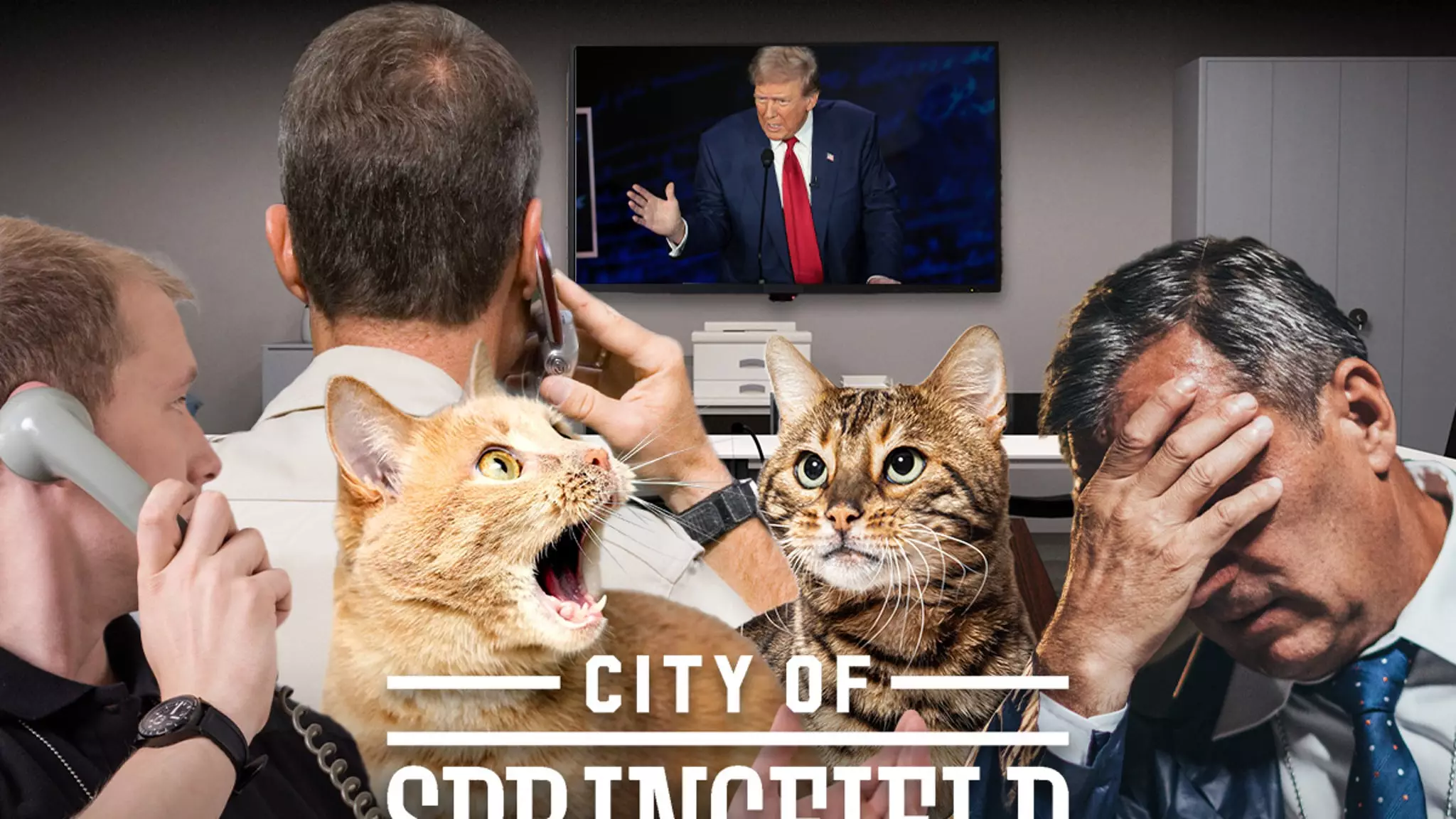In an era characterized by rapid information dissemination, the ramifications of false claims can be profound. Recent comments made by Donald Trump during a debate have exemplified this phenomenon. During the event, he asserted, without evidence, that Haitian immigrants in an Ohio town were engaged in disturbing acts such as consuming household pets. This alarming suggestion has ignited a flurry of concern from the public, leading to an unprecedented influx of calls to the Springfield, Ohio Police Department. Officers now find themselves fielding an overwhelming number of inquiries, which are distracting them from their primary duty of maintaining public safety.
The Springfield Police Department has reported that the volume of calls they are receiving has doubled, each one centered around the unfounded claim that immigrants are harming pets. Officers have clarified that there have been zero reports of such incidents, yet the panic and curiosity sparked by Trump’s accusations have manifested in a palpable sense of urgency among residents. It raises an essential question about the responsibility of public figures to provide accurate information and the consequences when they fail to do so.
One notable instance within the state involved a woman in Canton, Ohio, who was arrested for allegedly killing and eating a cat. However, this case is not related to the immigrant community and highlights how misleading narratives can distort public perception. The woman in this instance was a lifelong Ohio resident, underscoring the disconnect between Trump’s claims and actual crime statistics.
The media’s handling of misinformation is crucial, particularly in political contexts. During the debate, moderator David Muir attempted to fact-check Trump’s statements in real time by citing the Springfield city manager, who confirmed that no pets had been harmed. However, the damage had already been done. The viral nature of Trump’s comments allowed them to reach a broad audience, far beyond the immediate context of their validity. Social media platforms, in particular, serve as a double-edged sword, capable of spreading both truth and unfounded fears with alarming speed.
Additionally, in a further amplification of this narrative, Donald Trump Jr. shared a 911 call regarding Haitian migrants with dead geese, seeking to validate his father’s assertions. Despite this attempt, the original claim about pets continued to drive public concern, revealing a gap between evidence and perception that is troubling in the current media landscape.
This episode demonstrates a critical need for the public to maintain a discerning perspective toward the information they consume—especially from influential figures. The rise in unwarranted anxiety concerning immigrant behavior in Springfield, driven by conspiracy-laden rhetoric, serves as a cautionary tale. As law enforcement grapples with the fallout of these unfounded fears, it is a reminder of the societal responsibilities tied to human communication. In the end, the true challenge lies not just in combating misinformation, but in cultivating a culture that values and seeks out verifiable facts.

